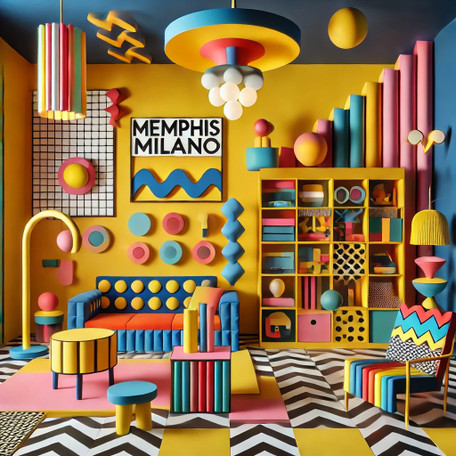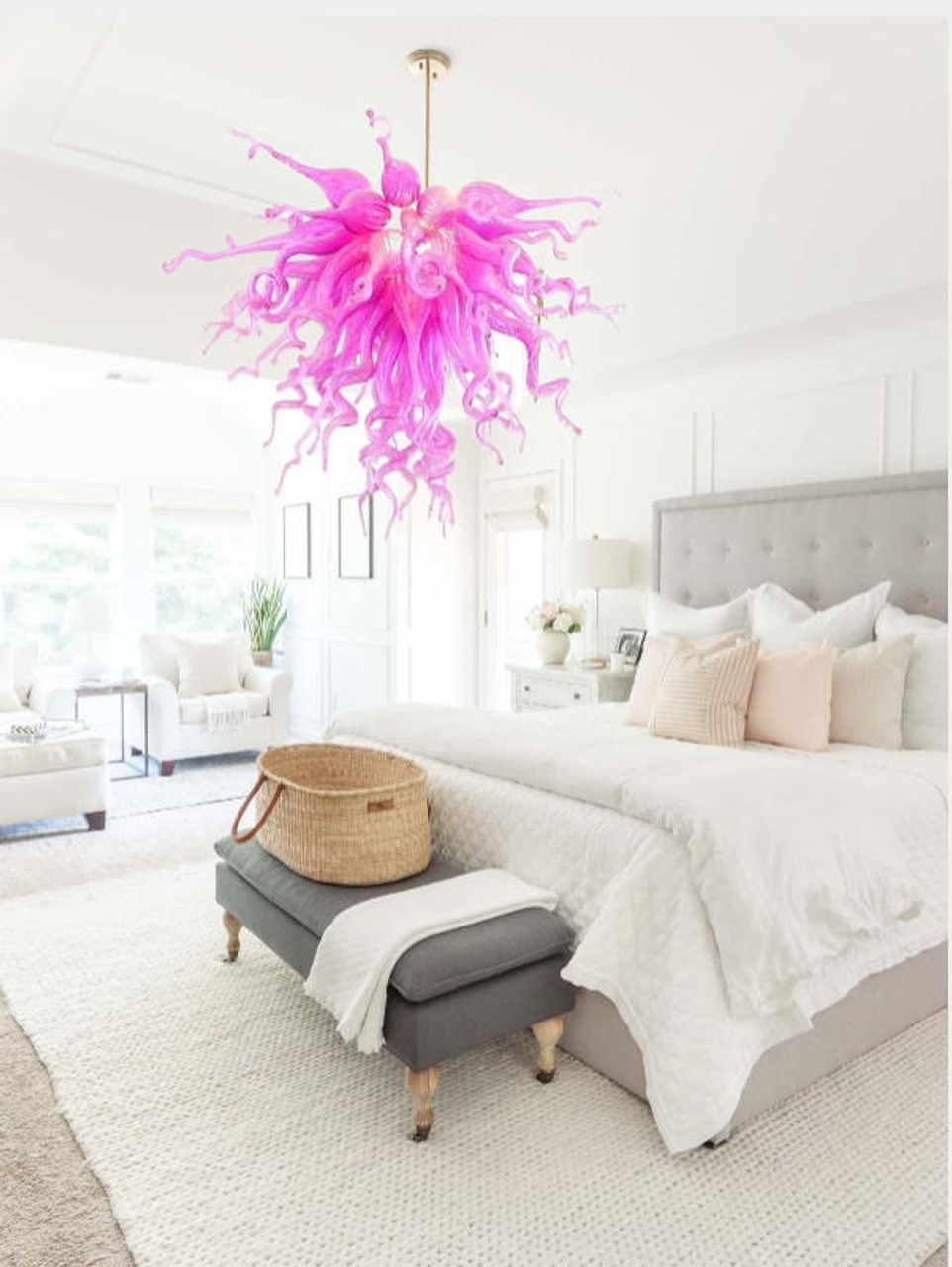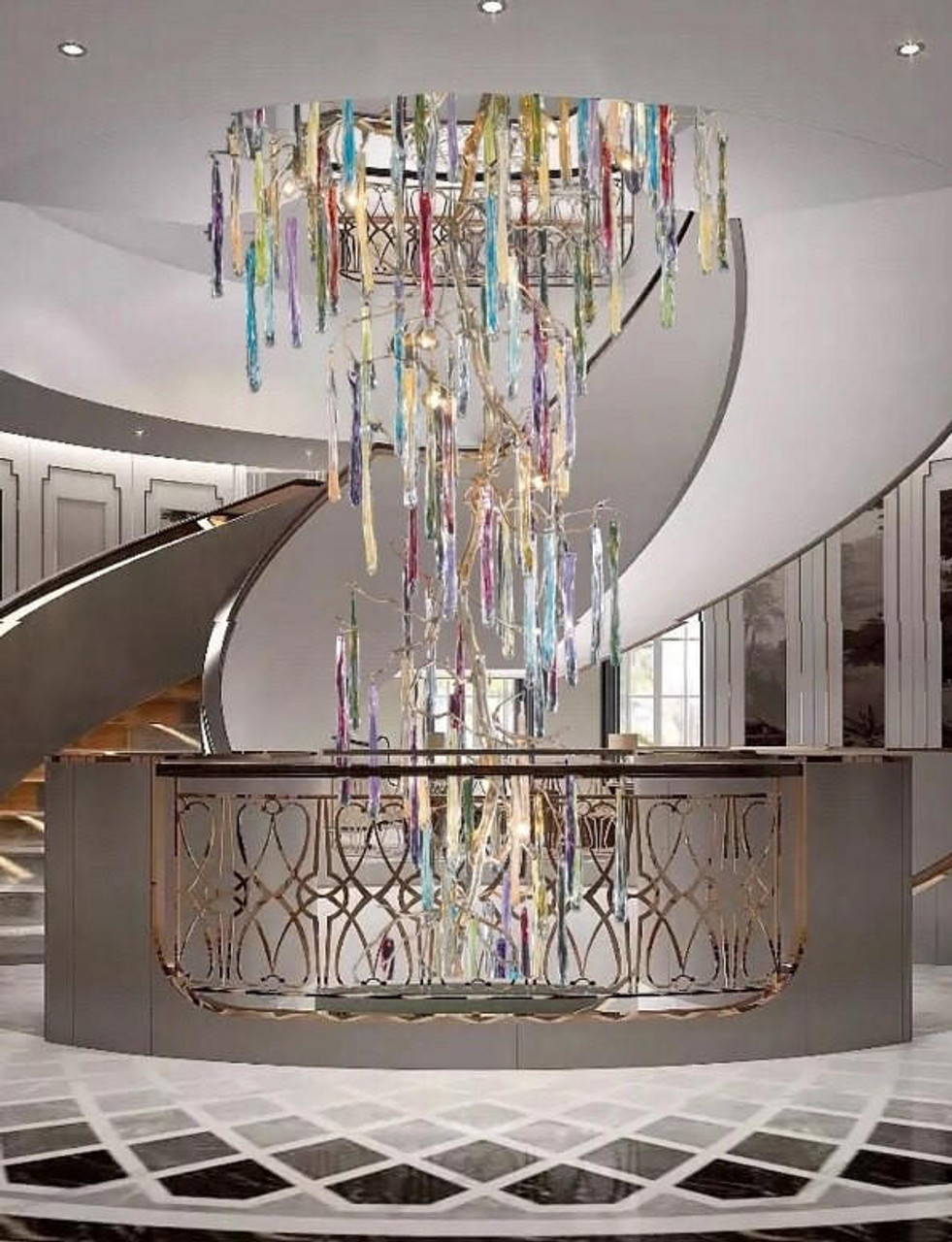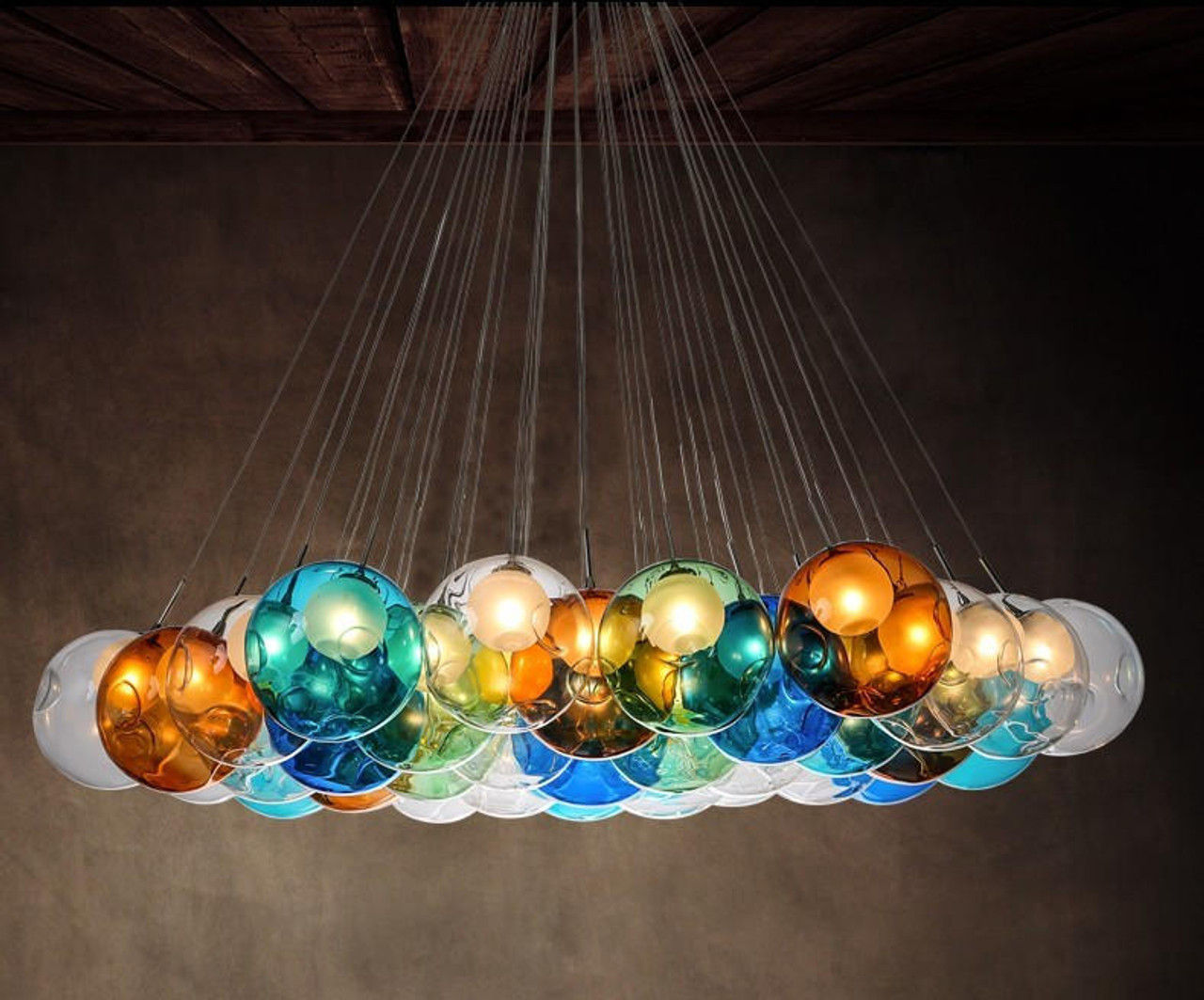Bold and Unconventional: Why the Memphis Milano Style Remains Influential Today
Posted by Bert Ron-Harding: Architectural Technologist on Sep 09, 2024
In the ever-evolving landscape of design, some movements transcend their initial context and continue to ripple through generations, challenging conventions and inspiring new ways of thinking. One such movement is the Memphis Milano style. Born in the early 1980s, this audacious collective broke all the rules of design, rejecting the cold rationalism of modernism and celebrating color, geometry, and a sense of playful anarchy. Today, more than four decades after its inception, the Memphis Milano style remains an influential force in the world of design. Its bold, irreverent approach continues to inspire architects, designers, and artists who seek to push boundaries and rethink the possibilities of form, color, and function.
As an architect who thrives on challenging traditional ideas and norms, I find a kinship with the Memphis movement’s willingness to break the rules, to question the status quo, and to embrace the unexpected. Like the Memphis collective, I believe that design should be both functional and provocative, that it should address the needs of users while simultaneously delighting, surprising, and even provoking them. The Memphis Milano style, with its vibrant hues, clashing patterns, and unconventional forms, does precisely this, challenging our preconceptions and reminding us that design can be joyful and expressive without sacrificing purpose.
The Origins of Memphis Milano
To understand why the Memphis Milano style remains influential today, we must first delve into its origins. The movement was founded in 1981 by the radical Italian designer Ettore Sottsass. Alongside a group of like-minded designers, including Michele De Lucchi, George Sowden, and Matteo Thun, Sottsass sought to shake up the design world. At the time, the dominant style was modernism, with its emphasis on minimalism, functionality, and rationalism. The post-war design ethos was heavily influenced by Bauhaus principles, where form followed function, and ornamentation was considered a crime.
Sottsass and his collective felt that modernism had become too rigid, too sterile. They wanted to inject a sense of humanity, emotion, and fun back into design. Named after the Bob Dylan song "Stuck Inside of Mobile with the Memphis Blues Again," the Memphis group rejected the austere functionalism of modernism and embraced a more eclectic, freewheeling approach. They drew inspiration from a wide range of sources: Art Deco, Pop Art, kitsch, and even ancient Egyptian and Aztec designs. The result was a bold, experimental style that mixed geometric shapes, bright colors, and unconventional materials.
The Memphis Milano style first debuted at the Salone del Mobile in Milan in 1981, where it shocked and fascinated the design world. The pieces on display were unlike anything people had seen before. There were tables made of plastic laminate with zig-zag legs, lamps with bright, primary-colored shades, and cabinets that looked more like abstract sculptures than functional storage units. Critics were divided. Some hailed the Memphis collective as the future of design, while others dismissed it as frivolous and unserious. But one thing was clear: the Memphis Milano style had made an impact, and its influence would continue to be felt long after the initial shock had worn off.
Rejecting Functionality as Sole Purpose
One of the reasons the Memphis Milano style continues to be relevant today is its fundamental challenge to the idea that design must be purely functional. In the world of architecture and design, we are often taught that form should follow function, that the purpose of an object should dictate its shape, material, and color. The Memphis group, however, turned this notion on its head. They argued that design could be expressive, emotional, and even whimsical, without sacrificing its utility.
Take, for instance, one of the most famous pieces from the movement, the Carlton Bookcase, designed by Ettore Sottsass himself. The bookcase, with its zig-zagging, asymmetrical shelves and brightly colored geometric shapes, is as much a sculptural statement as it is a piece of furniture. It defies the conventional idea of what a bookcase should look like. Yet, despite its playful, almost chaotic form, it still serves its primary function of holding books. The Memphis Milano style forces us to reconsider the relationship between form and function, suggesting that utility and aesthetics can coexist in ways that challenge traditional expectations.
This rejection of pure functionality is part of what makes the Memphis Milano style so radical, and why it continues to resonate today. In a world where we are increasingly drawn to objects that have meaning beyond their utility — think of the rise of artisanal products, handcrafted furniture, and design objects that tell a story — the Memphis approach feels particularly relevant. It invites us to see design not as a solution to a problem, but as a form of expression, a way to communicate ideas and emotions. In my own work, I have always strived to blend functionality with a sense of narrative and joy, and this is a philosophy that was very much pioneered by the Memphis collective.
Playfulness and Joy in Design
Another key aspect of the Memphis Milano style is its embrace of playfulness and joy. In contrast to the seriousness of modernism, Memphis was all about having fun with design. The pieces created by Sottsass and his collaborators are full of bright colors, unexpected shapes, and humorous references. There is a sense of play in the way that patterns clash, materials are juxtaposed, and familiar forms are distorted or reimagined.
One of my favorite examples of this playfulness is the Tahiti Lamp by Ettore Sottsass. The lamp, shaped like a stylized bird, features a beak-like shade and a zig-zagging neck. Its bold, primary colors and exaggerated form give it a cartoonish, almost childlike quality. It’s a lamp that makes you smile, a lamp that invites you to rethink the purpose of an object that is often overlooked in design. In the world of Memphis Milano, even the most mundane objects can be transformed into something fun and imaginative.
This sense of play is something that has deeply influenced my own architectural philosophy. Architecture, like furniture design, is often seen as something serious, something that should adhere to strict rules and regulations. But I believe, like the Memphis designers, that there is room for joy in design. There is a place for surprise, for delight, and for challenging the expectations of how a building or an object should look and feel. The Memphis Milano style reminds us that design can be more than just functional or beautiful — it can be a source of pleasure and inspiration.
Influence on Contemporary Design
While the Memphis movement officially disbanded in 1987, its influence can still be seen in contemporary design. The bold colors, geometric shapes, and irreverent spirit of Memphis have been embraced by a new generation of designers, many of whom were not even born when the movement was at its height. In recent years, there has been a resurgence of interest in the Memphis Milano style, with both original pieces and new designs inspired by the movement appearing in homes, galleries, and public spaces around the world.
One of the reasons for this resurgence is that Memphis, with its bold use of color and pattern, feels particularly suited to the digital age. The internet and social media have created a visual culture that thrives on bright, attention-grabbing images. The Memphis Milano style, with its saturated colors, strong contrasts, and playful forms, translates perfectly into the highly visual, image-driven world of Instagram and Pinterest. It’s a style that invites sharing and creates a sense of instant recognition and nostalgia.
Moreover, in a world where minimalism and sleek, neutral designs have often dominated interiors, the Memphis Milano style offers a refreshing alternative. It encourages designers and consumers alike to embrace maximalism, to play with color and form, and to take risks with their design choices. The rise of eclectic, personalized interiors, where different styles and eras are mixed together, owes much to the influence of Memphis. In a sense, Memphis paved the way for the current trend of mixing high and low design, blending luxury with kitsch, and creating spaces that are as individual and expressive as the people who inhabit them.
In fashion, too, the influence of Memphis is unmistakable. From the bold, graphic prints of the 1980s to today’s resurgence of patterned textiles and brightly colored accessories, the Memphis aesthetic has found its way into clothing, jewelry, and even makeup. Designers like Karl Lagerfeld, Missoni, and Christian Dior have all drawn inspiration from the Memphis movement, incorporating its playful, geometric shapes and vibrant colors into their collections. This cross-pollination between different fields of design speaks to the versatility and enduring appeal of the Memphis Milano style.
The Power of Collaboration
One of the most important legacies of the Memphis Milano style is its emphasis on collaboration. The movement was not the product of a single designer’s vision, but rather a collective effort by a group of creatives who shared a common desire to challenge the status quo. This spirit of collaboration is something that resonates with me deeply as an architect, where successful projects are often the result of teamwork and the exchange of ideas across disciplines.
In Memphis, designers from different backgrounds and disciplines — architecture, industrial design, furniture design — came together to create a unified vision that was greater than the sum of its parts. This approach fostered innovation and allowed for the cross-pollination of ideas that gave birth to some of the most iconic pieces of the movement. Each designer brought their own perspective to the table, and the result was a collection of works that were diverse in form but united in their rejection of traditional design norms.
This collaborative ethos continues to be a driving force in contemporary design. In my own practice, I place great value on the collaborative process, working closely with engineers, urban planners, artists, and clients to create buildings that are not only functional but also reflective of the unique vision and needs of the people who will use them. The Memphis Milano style reminds us that design is not a solitary pursuit but a collective endeavor that thrives on dialogue, experimentation, and a willingness to take risks.
Memphis Milano: A Style for the Future
As we move further into the 21st century, the influence of the Memphis Milano style shows no signs of waning. In fact, its bold, unconventional approach feels more relevant than ever in a world where design is increasingly about creating experiences, telling stories, and challenging conventions. The Memphis movement’s playful, irreverent spirit offers a valuable lesson for designers today: that design can be both serious and fun, functional and expressive, purposeful and provocative.
In architecture, we are constantly navigating the tension between function and aesthetics, between the demands of the built environment and the desire for creativity and innovation. The Memphis Milano style reminds us that these tensions need not be oppositional, but can instead fuel new forms of expression and new ways of thinking about space, form, and function. Just as Memphis rejected the cold rationalism of modernism, today’s designers are increasingly rejecting the idea that there is a single, correct way to approach design. We are embracing diversity, experimentation, and the unexpected — values that are at the very heart of the Memphis ethos.
Ultimately, the lasting impact of the Memphis Milano style lies in its ability to inspire designers to think differently, to take risks, and to embrace a more expressive, human-centered approach to design. In a world that often feels dominated by uniformity and predictability, Memphis offers a reminder that design can be bold, unconventional, and full of life. Whether in architecture, furniture, fashion, or art, the Memphis spirit lives on, reminding us to celebrate creativity, color, and joy in all its forms.
In conclusion, the Memphis Milano style remains influential because it challenges us to rethink the way we approach design. It encourages us to break the rules, to experiment with form and color, and to find joy in the unexpected. As architects, designers, and creatives, we can all learn something from the bold, unconventional vision of the Memphis collective — a vision that continues to shape the future of design in ways both surprising and profound.





